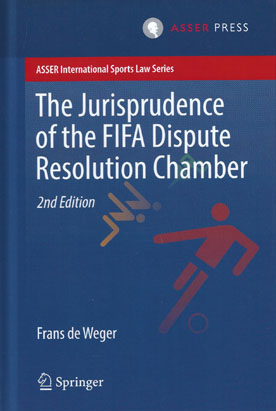
This book addresses the most important judicial aspects in relation to the Dispute Resolution Chamber (DRC), as well as the different categories of disputes, inter alia, the termination of player contracts, the amount of compensation, sporting sanctions, training compensation and the solidarity mechanism.
The DRC was established in 2001 by FIFA for the purpose of resolving disputes regarding the international status and transfer of players. Since then the DRC has developed into a major and influential alternative resolution body, with an impressive and ever-increasing caseload. In this updated and revised Second Edition the most important decisions of the DRC as of the date of its establishment in 2001 until 2016 are analysed.
It is a reference work for those with a legal and financial interest in professional football, such as lawyers, agents, managers and administrators, but is also aimed at researchers and academics.